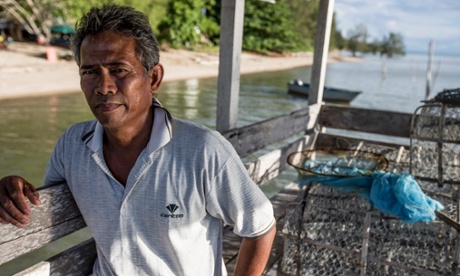
Abdul Karim Laing used to be a bomb fisherman. “I started in 1990,” he explains. “My friend was catching a lot of fish – it turned out he was using dynamite and he taught me. I got good at it.”
Laing lives in a tiny village called Berungus in Sabah province, on the north coast of Malaysian Borneo. This is the spectacular but volatile Sulu seascape that separates the southern Philippines from Malaysia.
But the seas off Sabah are also rich in coral reefs and a wide variety of pelagic and reef fish species. Whales and endangered turtles migrate through these waters and elusive dugongs graze on sea grass beds. Most of the coastal communities here derive their income from fishing. And dynamite and cyanide have both proven alarmingly popular amongst small-scale fishers struggling to compete with industrial trawlers and purse seines.
Laing used bombs to catch fish for a decade. The devices were – and still are – common across South East Asia’s 'Coral Triangle', because they’re so easy to make.
According to Laing, all you need is potassium nitrate in the form of fertilizer, gasoline, a beer bottle and phosphorus from matchsticks mixed with the strike-strip to make a rudimentary fuse. They can cost as little as a pound. Lobbed into a shoal, these bottle bombs rupture fishes’ swim bladders, causing them to float to the surface where they are easily collected.
But they also decimate coral reefs – a single beer bottle can blast a crater two to three metres in diameter, while the accompanying rubble stifles surrounding corals, preventing recovery. Sometimes they explode prematurely, maiming or even killing fishermen.
The other favoured method is potassium cyanide. An onboard engine pumps air through a common garden hose to divers who squirt milky clouds of the poison into reefs to stun fish. The coral dies – as do many divers, by staying down too long, going up too quickly and getting the bends.
When representatives from Malaysia’s Department of Fisheries visited his village, Laing quickly changed his thinking.
“They helped me understand that although bombs and cyanide are quick, they kill the coral reefs,” he says. “And if the reefs are gone, the fish will go too.” According to Laing, the people that use bombs and cyanide claim they’re just trying to survive. “But I use nets and lines and it is enough to feed my family. I don’t think it makes life easier if you use bombs.”
Once he understood just how destructive blast fishing was, Laing became passionate about preventing it. With support from the Coral Triangle Initiative (CTI), he started patrolling the Berungus Reef.“I have an engine, GPS, binoculars and a petrol allowance,” he says. “And now I’m building a bigger boat for patrolling.”
Thanks to his efforts, the reef has been able to recover, escaping the damage visited on other sites. But being a reef custodian has its perils. In 2008, Laing says eight cyanide fishermen threatened to bury him at sea if he didn’t leave them alone. Hostility hasn’t stopped him though. "If I find people damaging our reef, I ask them to leave. If they won’t, I call the police.”
Laing is an example of the collaborative management principal that most conservationists agree is the key to making large-scale marine parks like this work.
Today, Laing’s son Kamarudin is working with his father as an Honorary Wildlife Warden. “Every three days or so, he patrols the protected zone,” Laing says with obvious pride. “I’m glad my village is going to prosper in the long term, it’s not going to be threatened. That’s my promise.”
complete article at: The Guardian article on bombing reefs

No comments:
Post a Comment
Note: Only a member of this blog may post a comment.